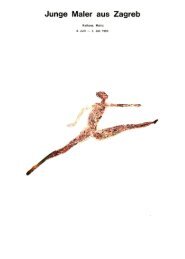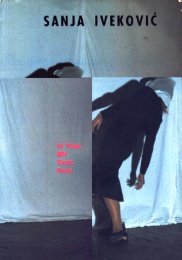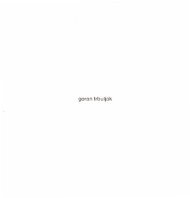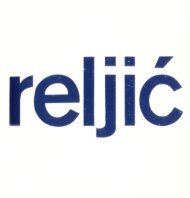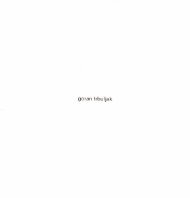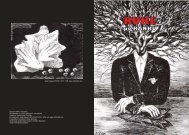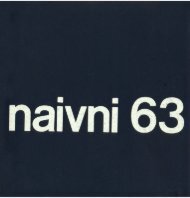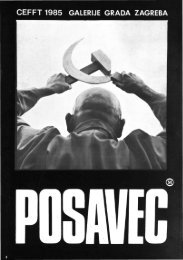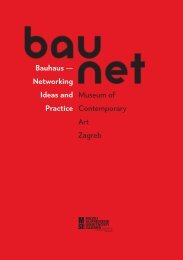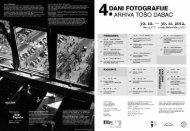Chen Zhen - Muzej suvremene umjetnosti Zagreb
Chen Zhen - Muzej suvremene umjetnosti Zagreb
Chen Zhen - Muzej suvremene umjetnosti Zagreb
Create successful ePaper yourself
Turn your PDF publications into a flip-book with our unique Google optimized e-Paper software.
Nada Beroš Artist-doctor N. B. Yesterday", youbegan your lecture atthe Academy of Fine Arls in <strong>Zagreb</strong> by talking about an art project in 1990, which cameto be in a forest at the foot oj the famous Cezanne's Mont St. Victoire, and which youcalled your first artproject.l am interested in what preceded that particular project, orrather· if 1 may be allowed a small exercise in semantics with the title o/your <strong>Zagreb</strong>exhibition (Six roots) - J would like to learn something about your artistic and familyroots.C. Z. Well, to begin at the beginning, I was born in Shanghai in 1955in a period thatcould be termed transitional, since it was only few years after the establishment ofthe People's Republic of China. One of the most important experiences in my life wasthe period that I spent in China at the time of the Cultural Revolution, between myrrth and arst years. At the end of that period I enrolled at the town's only art school.the School for Fine Arts and Crafts, where I spent three years (1973-76), I've always hada penchant for making things with my own hands. And since my whole family wasscientifically oriented - they are all doctors or researchers in the field of medical science- 1was regarded as a kind of black sheep of the family. The decision to enrol intothe first artistic school during the Cultural Revolution was partially personal and partiallybecause it offered the only real option, bearing in mind that it was the only artschool there was. In those days no other such school existed, For economic reasons,China wanted to revive traditional skills - carving sculptures in wood, ivory ... - inorder that they could be sold in foreign lands for hard currency, thereby improvingthe country's economic circumstances. Needless to say, it was an utterly traditionalschool, and where I attended the Department for Work in tvory. So as to specialize inthe craft t was obliged to study traditional painting, and the art of engraving, and tobe able to do that I had to learn to draw, to model in clay, to carve sculptures in wood,stone .., Looking back on it today. the school was very useful to me in that it enabledme to acquire all those skills. But it also provided me with my first contact with theart of the West, in the sense of "Westernisation" of drawings and sculptures.N. B. At that time, did you possess any information about modern and contemporaryart in the West?C. Z. In the time of the Cultural Revolution the school regarded Impressionist art asbourgeois; it was as good as proscribed. The art we were supposed to model ourselveson was Socialist Rea1ism of the Soviet style. Of course, we knew absolutely nothingabout the Russian avant-garde, or about Black Square by Malevich.N. B. Has your artistic career begun in China.?c. Z, In retrospect, and bearing in mind my perception of art - which for me is anexchange of trans-experiences, it seems to me that one becomes an artist at themoment of birth. My entire experience, experiences as a child, as a young man - anthat can be viewed as artistic experience ... My memories of childhood - like, for• 22. OS. 2000. 67



